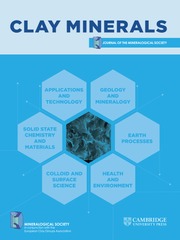Article contents
Alteration of glassy volcanic rocks to Naand Ca-smectites in the Neogene basin of Manisa, western Anatolia, Turkey
Published online by Cambridge University Press: 09 July 2018
Abstract
Alkali- and Ca-rich smectites occur in association with Neogene lacustrine sedimentary rocks and high-K calc-alkaline volcanic rocks with compositions ranging from andesite to rhyolite in western Anatolia (Turkey). Major clay occurrences are associated predominantly with the Foça and Akçaköy ignimbrites and with the ignimbrites within the Rahmanlar pyroclastics. Experimental studies indicate that the main clay minerals present are Na- and Ca-smectite and subordinate illite, associated with silica polymorphs, trace clinoptilolite and chlorite. The authigenic minerals formed by weathering and metasomatic reactions between hot volcanic material and lake water. Smectite was produced as a result of argillic alteration of the volcanic glass and feldspars of the ignimbrites, Rahmanlar pyroclastics and reworked volcaniclastic sediments through chemical weathering and dissolution-precipitation processes and formed as authigenic phases both in terrestrial and nearby shallow lacustrine environments under prevalent humid or semi-humid climate during the Neogene.
- Type
- Research Article
- Information
- Copyright
- Copyright © The Mineralogical Society of Great Britain and Ireland 2013
References
- 5
- Cited by


